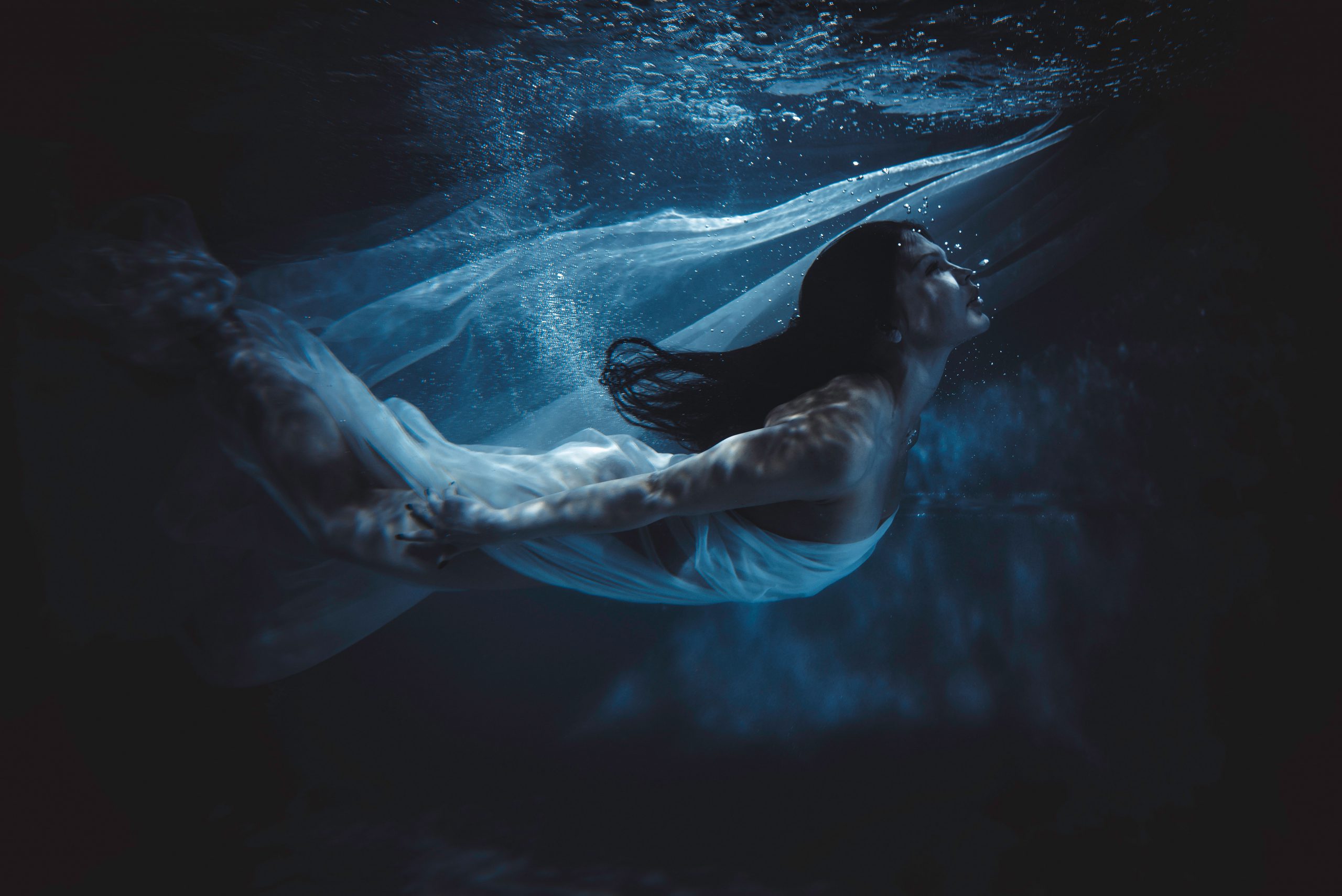
With a white ribbon loosely tied around her hair, Marie (Caroline Ducey), watches from afar as her square-jawed fiancé is made up for a fashion editorial in Catherine Breillat’s “Romance.” Draped in white, she’s a distant observer, her gaze inscrutable, judging. After he’s finished work, they sit in a cafe, tears staining her face as her expression remains vacant. “We’ve never made love all night,” she tells him. He insists she’s wrong. They argue. She says she will cheat on him and that he will not make her give up sex. At a Japanese restaurant, he pours some sake, and Marie accuses her fiancé of drinking to avoid intimacy. “You only love when there’s a table between us,” she says flatly before raising her voice.
Depending on your perspective, “Romance” charts Marie’s downfall or her liberation. Trapped in a white-clad prison with a man who won’t touch her, she journeys into the erotic imagination in increasingly risky sexual encounters. Breillat directs the film with typical coldness; the performances are monotone and infused with longing. Among her movies that use unsimulated sex, “Romance” (with its ironic title) positions sex as an essential need and a tool for forging identity.
Since her feature debut, “A Real Young Girl” in 1976, Breillat has explored many shades of the erotic. Unsatisfied with gentle, romantic narratives, she pushes her characters to their sexual limits. Her approach is hardly naturalistic and favors a cold distance in even her most intimate films. The sex, graphic by nearly any standard, is kept similarly at arm’s length and often unfolds in real-time. It’s often awkward and strange in the same way sex in real life lacks the glossy editorialization of Hollywood.

In an era where sex in movies seems to be on trial, Breillat’s films puncture the conception of “good sex.” Breillat’s films are wrought with uncertainty, unbridled longing, and messy coercion as they challenge easy readings. Though it’s been nearly ten years since her last movie, “Abuse of Weakness,” the thrust of her filmography still can shock. In an era where sex seems to increasingly exist as either a shadowy absence or in excessive overabundance, both are informed heavily by the nature of capital (Disney films avoid sex to appeal to the broadest audience possible, whereas pornography wants uncomplicated titillation to appeal to baser needs, rather than philosophical ones), Breillat asks the simple question, “why do we have sex?”
In her most critically acclaimed film, “Fat Girl,” two sisters vacation with their family. The older daughter, Elena (Roxane Mesquida), has modelesque good looks and dreams of a perfect romance. The younger sibling, Anaïs (Anaïs Reboux), is less conventionally attractive and has no such aspirations. She hopes her “first time” is with a man who doesn’t love her. Throughout the summer, Elena strikes up a romance with an older man, an Italian law student who pressures her into sex. Anaïs watches, often literally on the other side of the room, pressed against a wall. It’s a film that doesn’t offer a polemic as much as it does observations about the nature of beauty and desire within a society poisoned by both random and patriarchal violence.
The film reveals Breillat’s tension with society: her unwillingness to cater to expected tropes about female sexuality and the importance of sex. Unsentimental, she presents a vision of sexuality that imprisons its young women in a battle for attention and power. The capital power of Elena’s youth and beauty, in particular, are elevated and weaponized. Just 15 years old, she understands the weight of her power but can’t understand the difference between being coveted and loved. Unlike her younger sister, she mistakes desire for genuine love.

The transgressiveness of “Fat Girl” illuminates fundamental realities neglected by prevailing narratives: young people have sexual desires, suffering and beauty are intertwined, and sex can be ugly. While the departure from the heavily mediated, Disney-fied view of reality might be apparent, Breillat’s departure from the tropes of pornography is similarly worth noting. Though most porn fetishizes youth (with careful articulations that everyone is over-age), it does so in a self-effacing way, giving the audience permission to desire underage bodies. The fantasy it sells is one not only of compliance but also free from consequences. The women are merely vessels, unaffected by what happens to their bodies.
In “Romance,” there’s an extended scene where Marie encounters a self-proclaimed “ugly” teacher who claims to have pleasured thousands of women. He likes BDSM and dominates beautiful young women who bend to his will. Repulsed but intrigued, Marie entertains his fantasy, which soon becomes hers. The scene underlines the paradoxical nature of desire, where submissiveness becomes a kind of power and the stark reality that only through sex can certain aspects of the self be revealed. With no love or affection, Marie discovers new limits of her physical experience with a man who repulses her. In a way, he will always know parts of her that no other person can or will. How do we reconcile the intimacy of this type of knowledge with the reality that it often remains off-limits to those we love most?
Catherine Breillat’s films may not be for everyone. Still, they illuminate how, in a culture that seems caught between extreme chastity and pornographic excess, there’s little room to engage with the more complex and perhaps even unsettling aspects of sex and desire. On the one hand, she envisions the erotic imagination as a pathway to liberation while acknowledging that the structures of violence within our society make that similarly impossible. On the other hand, her cold and raw films invite the audience to reflect on the nature of the how and why of their sexual desires in a way that subverts straightforward interpretations and readings. In a world increasingly fragmented by extremes, Breillat’s landscape of ambiguity remains a potent arena for self-reflection and exploration.




